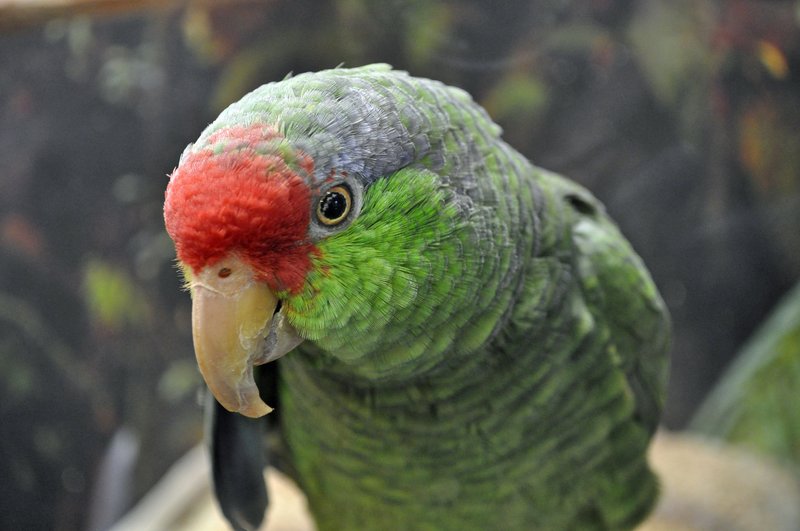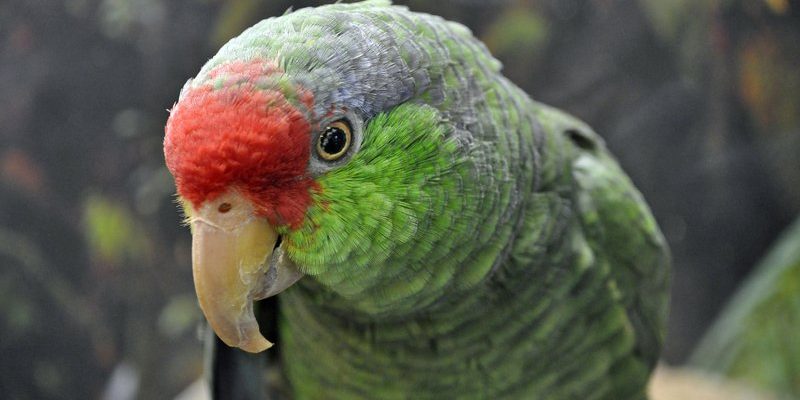
Parrots are some of the most colorful and captivating birds you’ll ever come across. They’re not just pretty faces; these avian wonders are known for their intelligence, social behavior, and unique vocal abilities. Imagine sitting in a lush, green forest, and suddenly hearing a parrot mimicking your laughter or even saying your name. It’s a moment that brings a smile to your face, right? That’s the magic of parrots.
Native to tropical and subtropical regions around the world, parrots belong to the order Psittaciformes. There are over 393 species of parrots, each with its own personality and quirks. Whether you’re fascinated by their vibrant plumage or their playful antics, there’s so much to learn about these incredible creatures. So grab a cup of coffee, and let’s dive right into the colorful world of parrots!
Physical Characteristics
Parrots are easily identifiable by their striking colors and unique beaks. Most species sport bright greens, blues, reds, and yellows that make them stand out in their natural habitats. This vibrant coloring isn’t just for show; in the wild, it helps them blend into the lush foliage of their environments, offering protection from predators.
Their beaks are curved and strong, perfectly designed for cracking open nuts and seeds, their primary source of food. Parrots also have zygodactyl feet, which means two toes point forward and two point backward. This unique feature allows them to grasp branches and food items with ease, almost like having an extra hand! If you’ve ever watched a parrot climb or pick up a snack, you know how agile they can be.
Let’s not forget about their size! Parrots range from the tiny Budgerigar, measuring just about 7 inches in length, to the impressive Hyacinth Macaw, which can grow up to 40 inches. No matter their size, they all share a general characteristic: a sturdy body and a long tail that aids in flight.
Habitat and Distribution
Parrots are predominantly found in tropical and subtropical regions, thriving in environments rich in trees and vegetation. Rainforests are their primary playground, offering food and shelter. However, they can also adapt to other environments, including savannas and woodlands. Their ability to live in various habitats is one reason they can be found on nearly every continent except Antarctica.
You might be surprised to learn that many parrot species are declining due to habitat loss and the illegal pet trade. Deforestation for agriculture and urban development has put enormous pressure on their populations. Conservation efforts are crucial to ensuring these beautiful birds continue to soar through our skies.
For example, the Amazon Rainforest is home to numerous parrot species, including the lively Scarlet Macaw and the intelligent Blue-and-yellow Macaw. In contrast, the Cockatoo prefers the woodlands of Australia. With such diversity in their habitats, parrots have evolved numerous adaptations to thrive in their surroundings.
Diet and Feeding Habits
When it comes to diet, parrots are primarily herbivores. Their diets mainly consist of fruits, nuts, seeds, and flowers. They have strong beaks that allow them to crack open tough nuts and seeds, which are essential for their nutrition. It’s fascinating how some parrots can even eat hard-shelled fruits that would stump other birds!
Some species have unique feeding habits. For instance, the Keas of New Zealand are known for their playful nature, engaging in activities like pulling off car windshield wipers or opening up backpacks to scavenge for food. This highlights their intelligence and adaptability when it comes to finding food.
In captivity, proper nutrition is critical to a parrot’s health. A balanced diet may include pellets, fresh fruits, and vegetables, along with occasional nuts. It’s essential to remember that while they love their treats, moderation is key! Too many high-fat foods can lead to obesity and health issues.
Social Behavior and Communication
Parrots are incredibly social creatures. In the wild, they often live in flocks, which provides them with safety and companionship. Flocks can range from a small group to hundreds of individuals, and they communicate through a variety of vocalizations, including squawks, chirps, and whistles. It’s like their own language, filled with nuances that convey different meanings.
You might be surprised to learn that some parrots can mimic human speech and other sounds they hear in their environment. This talent isn’t just a party trick; it’s rooted in their social nature. In the wild, parrots use vocalizations to strengthen bonds within their flock. In captivity, they often mimic their human companions, creating a unique bond through communication.
These intelligent birds thrive on interaction and mental stimulation. Keeping a parrot as a pet means dedicating time for play and training. Engaging them with toys, puzzles, and social activities can lead to a happy, well-adjusted bird.
Breeding and Lifespan
Most parrots are monogamous, forming strong pair bonds that can last a lifetime. During the breeding season, they engage in elaborate courtship displays, which may include feeding each other and performing aerial acrobatics to attract a mate. Nesting typically takes place in tree cavities, where the female lays a clutch of eggs.
The incubation period varies by species, ranging from about 18 to 30 days. Once the chicks hatch, both parents participate in feeding them and keeping them safe. It’s a team effort that showcases their strong family values. As the chicks grow, they gradually learn to fly and forage for food under the watchful eyes of their parents.
In terms of lifespan, parrots are known for their longevity. Smaller species like budgerigars can live 5 to 10 years, while larger species, like macaws, can live up to 50 years or more! This long lifespan means they require a serious commitment if you’re considering one as a pet, as they can become lifelong companions.
Conservation Status
Sadly, many parrot species are facing threats that put them at risk. Habitat loss due to deforestation, along with the illegal pet trade, has led to significant declines in their populations. For instance, the Spix’s Macaw was declared extinct in the wild, although a few are still held in captivity. It’s a stark reminder of the impact humans have on these beautiful creatures.
Conservation programs are crucial for protecting parrot habitats and supporting rehabilitation efforts. Various organizations work to raise awareness and provide resources for the preservation of these birds. For example, breeding programs are implemented for endangered species to increase their numbers and eventually reintroduce them into their natural habitats.
Each of us can contribute to conservation efforts by supporting organizations that focus on wildlife protection and responsibly caring for pet parrots. By raising awareness and advocating for these birds, we can help ensure they thrive for generations to come.
Interesting Facts About Parrots
| Species Count: | Over 393 species |
| Size Range: | 7 to 40 inches |
| Lifespan: | 5 to 100 years (varies by species) |
| Diet: | Fruits, nuts, seeds, flowers |
| Natural Habitat: | Tropical and subtropical regions |
FAQ
What are the most popular pet parrot species?
When it comes to pet parrots, some species are more popular than others due to their friendly nature and ease of care. The Budgerigar, often called a “budgie,” is one of the most commonly kept pets. They’re small, social, and can be quite affectionate. Other popular species include the African Grey—known for its amazing vocal skills—and Cockatiels, which are friendly and easy to train. Each species has its unique traits, so it’s essential to choose one that fits your lifestyle.
How can I train my parrot to talk?
Training your parrot to talk involves patience and consistency. Start by choosing simple words or phrases that you use often. Use positive reinforcement—like treats or affection—when your parrot attempts to mimic the words. Repeat the words in a clear, enthusiastic tone, and don’t be discouraged if it takes time. Just like us, each parrot learns at its own pace, making the journey of teaching them even more rewarding.
Are parrots social animals?
Absolutely! Parrots are known for their social nature. They thrive on interaction with other birds and humans. In the wild, they live in flocks, which helps them bond and stay safe from predators. If you’re thinking about getting a parrot, keep in mind that they require a lot of attention and mental stimulation to stay happy. Regular interaction is key to a well-adjusted parrot.
How can I keep my parrot entertained?
Keeping your parrot entertained is crucial for their well-being. Provide a variety of toys, such as climbing structures, puzzles, and chewables, to keep their minds engaged. Rotate toys regularly to maintain their interest. Also, consider spending quality time with your parrot daily—whether it’s playing games, practicing tricks, or simply chatting with them. Engaging in different activities can strengthen your bond and keep your parrot stimulated.
What are signs that my parrot is healthy?
Monitoring your parrot’s health is essential. Signs of a healthy parrot include bright, vibrant feathers, clear eyes, and a balanced diet. They should be active, curious, and interacting with you or their environment. If you notice any changes in behavior, like lethargy, loss of appetite, or changes in droppings, it’s essential to consult an avian veterinarian promptly. Early intervention can make a significant difference in their recovery.
Can parrots live with other pets?
Parrots can live with other pets, but it’s important to consider their temperament and the behavior of other animals in your home. Birds can be sensitive and may feel threatened by larger pets like dogs or cats. If introducing a new pet, supervise their interactions closely and ensure that your parrot has a safe space to retreat if they feel uncomfortable. Patience and gradual introductions are key to successful cohabitation.
What should I feed my parrot?
Feeding a balanced diet is crucial for your parrot’s health. A good diet typically consists of high-quality pellets, fresh fruits, veggies, and occasional nuts as treats. Avoid feeding your parrot avocados, chocolate, and other toxic foods. It’s important to research the specific dietary needs of your parrot species to ensure they get all the necessary nutrients. Monitoring their weight and health can help you adjust their diet as needed.
What is the best environment for a pet parrot?
Creating a suitable environment for your pet parrot involves providing a spacious cage with plenty of perches and toys. The cage should be placed in a lively area of your home, as parrots enjoy being part of the family. Ensure they have access to sunlight, but also offer shaded areas. Regular cleaning and providing fresh water and food are critical to maintaining a healthy habitat. Remember, your parrot will thrive in an environment that stimulates their physical and mental health.
How often do parrots need social interaction?
Parrots are very social creatures and need daily interaction to stay happy and fulfilled. Ideally, you should spend time with them every day, whether it’s talking, playing, or training. If you have a busy schedule, consider getting a second parrot for companionship, but make sure they are compatible species. Social interaction not only strengthens your bond but also enriches their lives and helps prevent behavioral issues.

